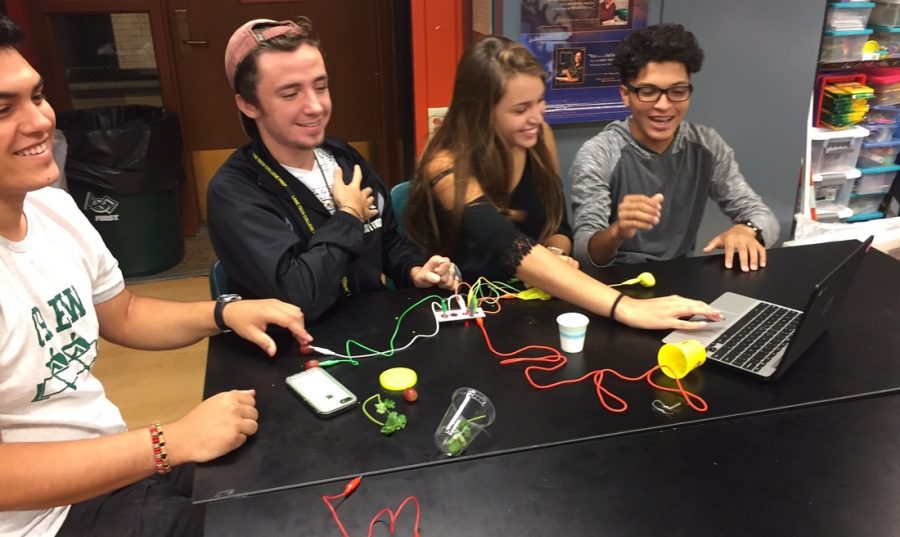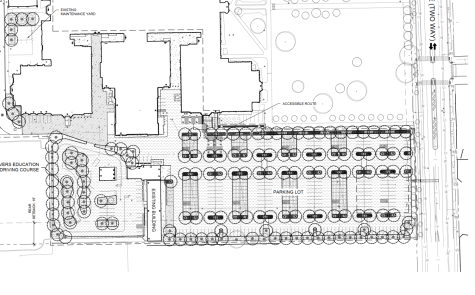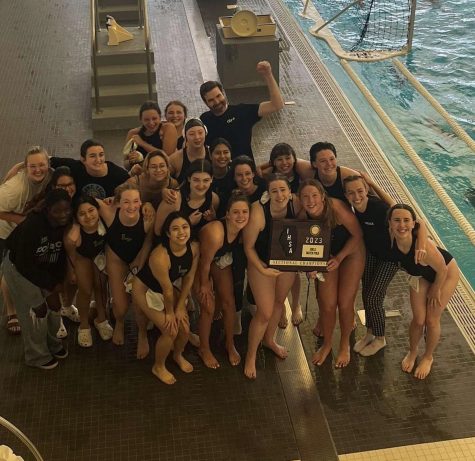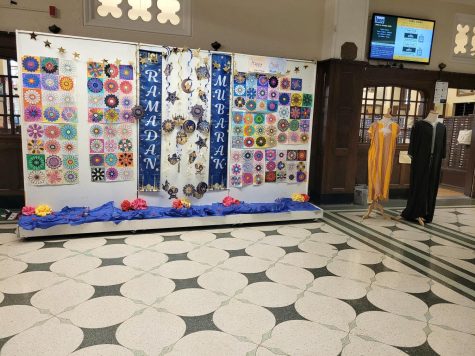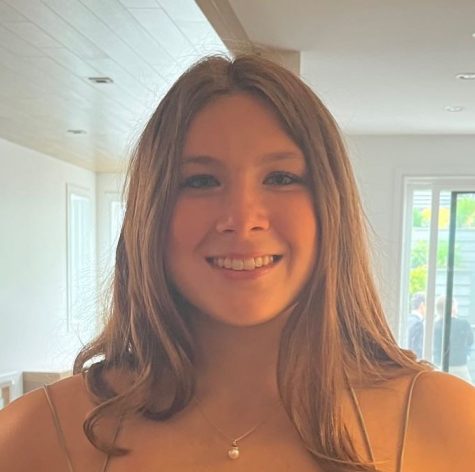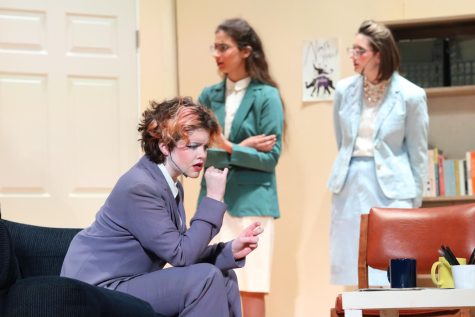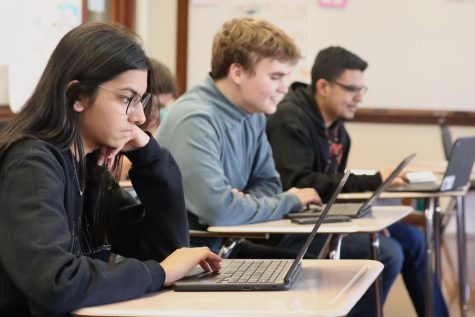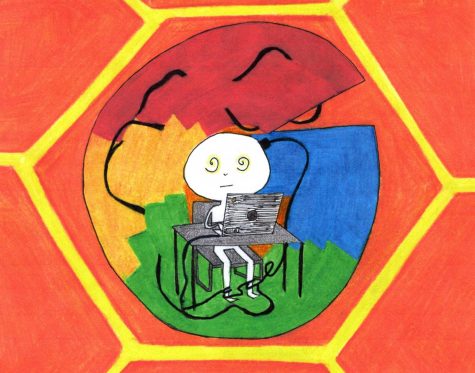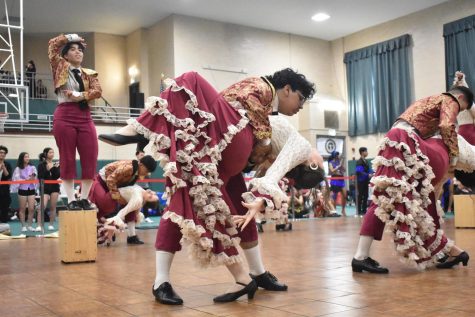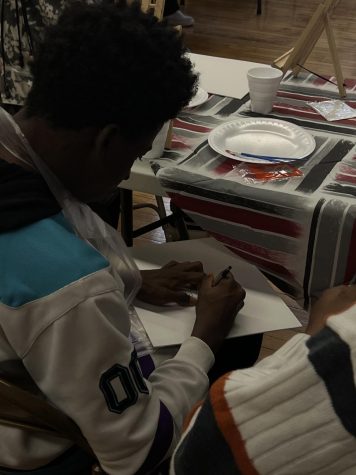Mrs. Rose returns with an updated neuroscience course
Armand Vargas, left, Vince Costello, Octavia Marie, and Jason Rivera are shown working collaboratively on the Makey Makey song challenge.
October 31, 2016
The newest lab being implemented in the neuroscience class consists of a cockroach being frozen and having one of its back legs removed.
It is then attached to an electrical output and hooked up to a speaker and then a spiker box, which allows for music to be transmitted to the leg. As a result of the music vibrations, the leg twitches and moves.
This lab is just one of the many updates being made to the curriculum of the neuroscience course. This year Mrs. Rose has returned to teaching the class, and she is ready to introduce various new concepts to the class, which she hopes will improve the way students view and understand the material they are learning.
“Before, I would teach about things and I would show them pictures of things, and now I let them do it,” Rose said.
Rose is trying to create an environment in which students are more active and engaged in what they are learning.
Instead of simply reciting information at the students, she wants to create a “community of learners,” where students can make the information on a page come to life by completing labs and activities that are meant to enhance their learning experience. The new labs and activities are meant to build on information that would otherwise consist mainly of memorizing vocabulary without putting the concepts to work.
“My favorite activity we have done in class is playing with a Makey Makey, which allows you to turn food into music through the computer,” said Rania Ziar, Div. 771. “It is lot of fun to explore the different ways that technology can be incorporated into the class.”
Rose’s inspiration for this new teaching style approach comes from Punya Mishra, who works in the field of education at Michigan State University, where Rose is taking graduate classes. He places an emphasis on providing students with experiences so that they can connect whatever they are learning to the real world.
“He’s all about making the connections in the classroom and giving students time to be creative and taking things that are normally at a perspective that you can’t see and making them physical,” Rose said
By incorporating more creative activities into the class, such as making an optical illusion, Rose said students are using the information they have been taught and putting it to use. This allows for the words in the textbook to become more than words and actually take a physical form with a little help from the students’ imagination.
“The labs are more hands-on, and they’re actually creative and kind of fun sometimes instead of following processes,” Irene Caraballo, Div. 777, said.
By incorporating unique daily activities such as World of Wonder, which exposes students to something that they have never seen before or cared to notice, Rose said that she is helping to create a classroom full of kids who are eager to explore not only what is happening within them but also around them.
“It’s kind of just teaching us to to be creative and look for the wonder that’s always around you and trying to understand it and make sense of it, which is really just an overarching theme for the class,” Rose said.
The new curriculum aims to center the class more around students’ learning rather than students memorizing information from a textbook that will have no real meaning to them. Rose said she wants to ensure that the students are able to apply what they have been taught to the real world otherwise that information is useless.
“It’s definitely good that it’s about the course, but I really want it to be about the student experience because I feel like they’re the important piece,” Rose said.

